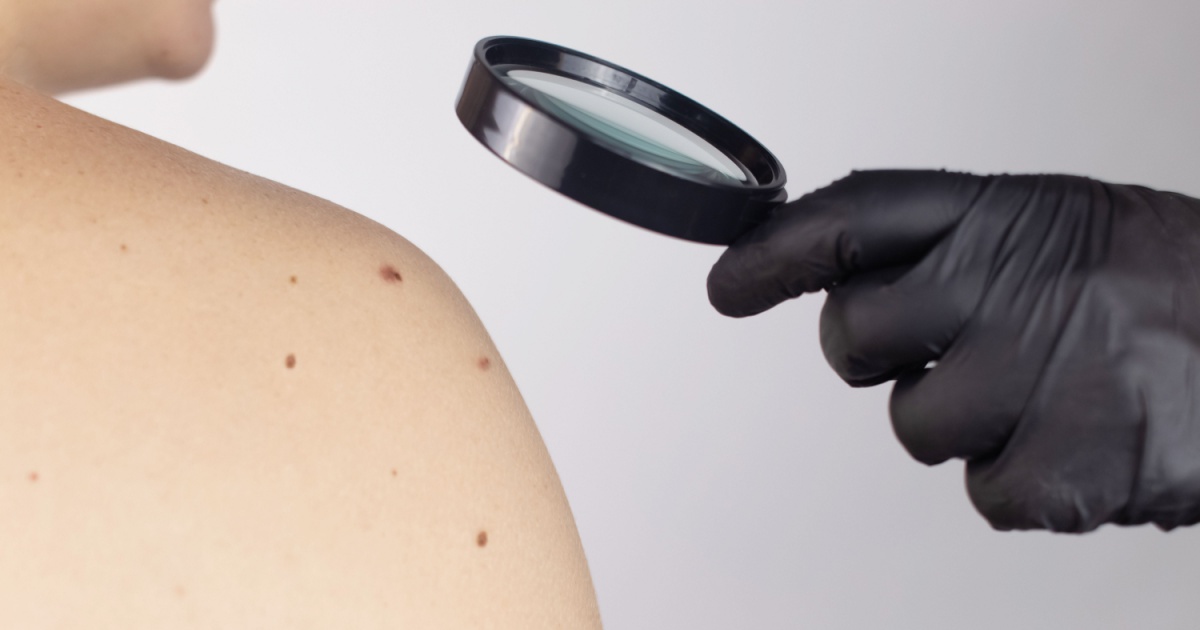A three-year-old in China undergoes a drastic treatment for his rare skin disorder. Qibao was born with large, raised moles across his head. In order for doctors to surgically remove them, they placed two saline expanders in his scalp that enlarged both sides of his head, leading to the cruel nickname of “Mickey Mouse”. But after five months, Qibao underwent a second procedure to remove the expanders, and his head looks completely transformed.
A toddler’s recovery from a rare skin disorder

Qibao’s disorder is called cerebriform congenital melanocytic nevus, and it comes from an overproduction of skin cells that create pigmentations. In most cases, it causes asymptomatic dark spots and/or small lesions, but in rare instances it causes growths that worsen quality of life and increase the risk of melanoma. Fortunately, Qibao was able to undergo a treatment to remove the moles.
However, the doctors in Shanghai needed to expand the scalp skin to ensure there’s enough tissue to close the wounds after the mole-removal. They added saline to the expanders over a few months until the scalp had stretched enough to proceed. Throughout, the family recorded the progress on China’s social media platforms. Although people supported them during this difficult experience, the clips of Qibao’s swollen head lead to the cruel nickname “Mickey Mouse”. However, after the procedure was complete, Qibao was free of the expanders and the moles he was born with.
His parents updated the public with post-surgery clips, showing the toddler playing in the hospital while he recovers with white bandages enveloping his head. His mother commented at how difficult the journey was in terms of the physical operations and the bullying from other children in their neighborhood in the Fujian province. “We wiped away our tears and kept moving forward,” she said, according to News.com.au.
More about congenital melanocytic nevus

Congenital nevus (or “CMN” for congenital melanocytic nevus) is a medical term for a mole people are born with. It’s a common type of birthmark that looks like a patch of pigmented skin. They vary in size, are usually raised, and sometimes have hair growing out of them. These moles can change in color, size, and texture over time. They don’t usually come with symptoms, aside from being more easily irritated compared to the skin around it. According to the National Organization for Rare Disorders (NORD), people of all races and skin colors can develop congenital nevi, and females and males are about equally prone to it.
Meanwhile, giant or large CMN is when a tumor-like mole covers a large part of the body, sometimes accompanied with smaller moles around it. It can appear in different kinds of textures such as pebbly, papular, wrinkled, wart-like, or brain-like. Unfortunately, these types of CMN enlarge as children age, heightening the risk of cancer. They may also cause symptoms like headaches, vomiting, seizures, and developmental problems, says Healthline. Additionally, kids may struggle with bullying and poor self-esteem because of their appearance.
“The development of melanoma is a significant complication in people with large/giant CMN,” explains NORD. “…About half of these melanomas occur in the first 5 years of life. Cutaneous melanomas tend to arise deep in the skin or residual fatty tissues of a large CMN, making early detection difficult. “ It can also appear in the brain or other internal organs. Additionally, giant CMN has also been associated with soft tissue cancer, muscle tissue cancer, and malignant peripheral nerve sheath tumors. Removing the nevi can reduce the risk of cancer but not eliminate it.
Another case of giant congenital nevus

A case similar to Qibao’s took place in the province of Sichuan, China, in 2024. An 11-month-old baby was born with a giant congenital nevus and protruding nodule on the forehead, explains the case report. It began to widen rapidly, so doctors planned a surgery similar to Qibao’s. First they excised the nevus on the scalp and grafted skin from the abdomen to cover it. When the patient was two and a half, they implanted three skin expanders into his scalp, two on either side and one over his forehead.
After four months of expansion with saline, they removed it all and covered the wound. After one year, the patient recovered and looked transformed. With a full head of hair and typically-shaped scalp, you’d never know about the rare skin disorder. People following Qibao’s story are looking forward to a similarly stunning result once his bandages come off.
Read More: Mother of 10 Reveals Rare Cancer Symptoms Before Passing Weeks After Diagnosis

